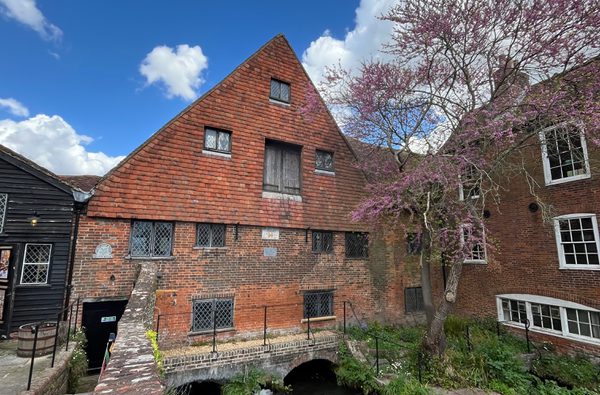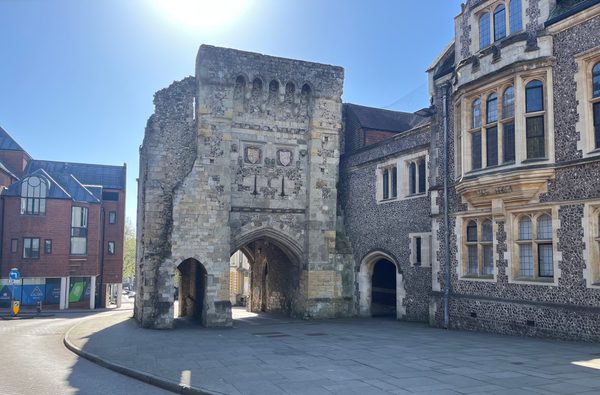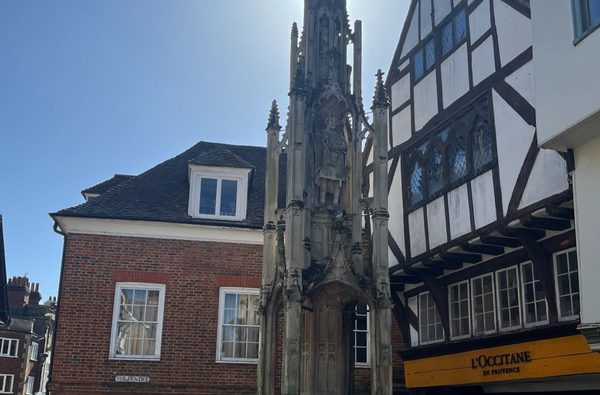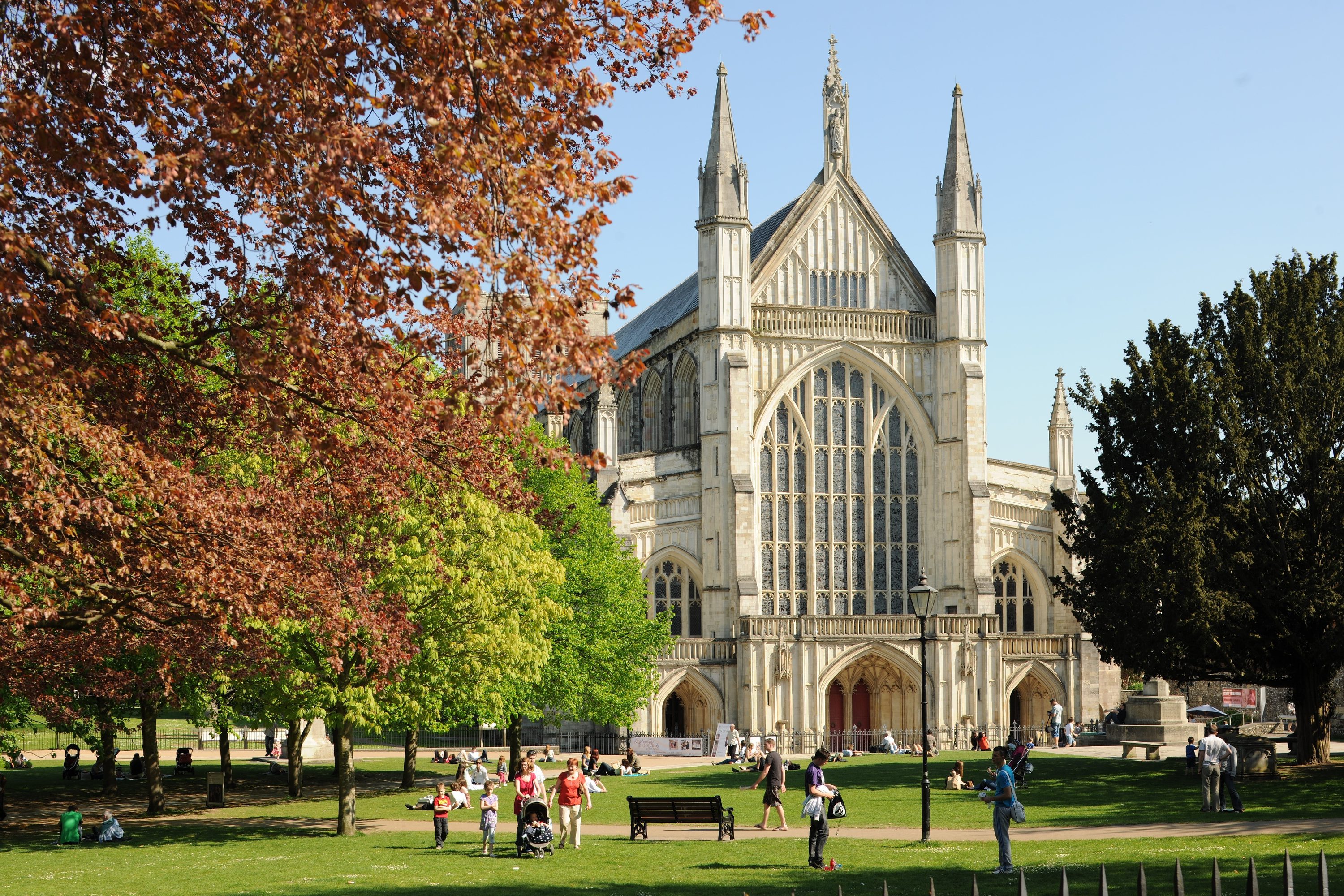In 2025, the 250th anniversary of Turner’s birth is being marked by numerous exhibitions, displays and events across Britain. Did you know that in 1795 Turner produced some sketches of Winchester landmarks in his “Isle of Wight sketchbook”. The sketches, held by Tate Britain, reveal how similar, in places, Winchester was hundreds of years ago to today.
Winchester Cathedral
Founded in 1079 and extensively remodelled over the next five centuries by successive bishops, Winchester Cathedral contains a rich array of architectural styles, from the massive vaults of the early Norman crypt to the ornate glories of the Renaissance chantry chapels and the 14th and 15th century perpendicular Gothic Nave.
The West Front of Winchester Cathedral dates from the second half of the fourteenth century, and incorporates William of Wykeham’s great perpendicular window, the largest in the cathedral. (The window itself holds an incredible story of restoration!) Turner’s drawing was made with the page turned horizontally, and the composition is continued ‘above’ with a slight sketch of the gable pinnacle leaving the page.

Winchester City Mill
The City Mill, in Eastgate Street on the River Itchen, was rebuilt in 1744 and is still standing and operating as a mill. There are records of a mill on Eastgate street as far back as 932 in cathedral records. The site milled corn for many hundreds of years before being at risk of demolition in the early 1900s. The National Trust took over operation and restored the site to a working mill in 2004.
In 1795 the building looks remarkably like it does today. The iconic steeped roof, front-facing windows and low-level archways leading to the wheelhouse are easy to identify. The still life of sculpture and architectural fragments in the foreground is an interesting early instance of Turner’s fascination with incongruous juxtapositions.

Westgate
The Westgate is a fortified gateway formerly part of Winchester City Walls with the earliest surviving fabric being Anglo-Saxon. The gate was rebuilt and modified many times between the 12th and 14th centuries. The latter modifications including the addition of a portcullis in the western façade and two inverted-keyhole gunports, the earliest in the country.
Turner’s sketch depicts the west face of the gate, constructed in the 14th century. The gate was in use until 1959 when the High Street was routed around it.

The Buttercross
The High Cross, also known as the City or Butter Cross is an early 15th century cross with multiple pinnacles and statuettes in a small alcove. The cross sits on a five-step base, the top step being as tall as pedestrians, which was once used by countrymen to sell produce, hence the name Butter Cross. In 1770 the Buttercross was sold off by the Paving Commissioners to a Mr Dummer. When he tried to remove it, the citizens of Winchester organised a demonstration to prevent it being moved.
Only the statue of St John the Evangelist dates from the 15th century, the remainder are from the major refurbishment of 1865 by the architect Gilbert Scott. This is the most notable difference between this series of Turner images and the sites we see in Winchester today.

2025 also marks the 250th anniversary of Jane Austen’s birth. Discover more about the Georgian city of Winchester as Jane (and Turner) would have known it by following our new trail:




